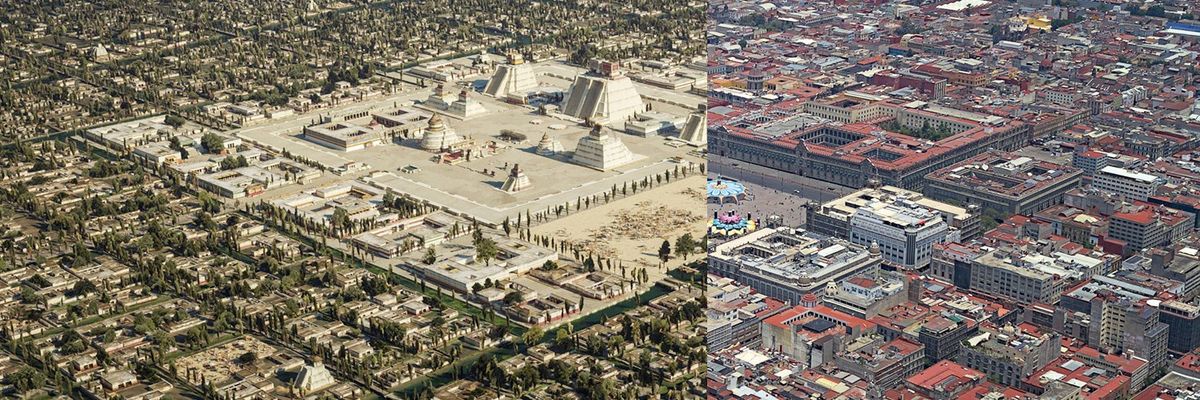Unbelievable 3D Reconstruction of Aztec Capital City Tenochtitlan Will Leave You Speechless

Journey back to 1518 and imagine Mexico-Tenochtitlan: a city rising from the Lake Texcoco bed, transforming into an impressive metropolis, home to over 200,000 individuals from diverse walks of life. With its strategic layout, the city reflected meticulous planning, marked by canals, walkways, and an array of impressive structures. Today, this grand city is known as Mexico City.
And we no longer have to imagine what this grand city might have looked like before it was destroyed by colonizing Spain. Drawing upon myriad historical and archaeological sources, Technical Artist Thomas Kole, along with a team of experts, recreated a vivid portrayal of Tenochtitlan, capturing its essence: a 3D reconstruction of the capital of the Aztec Empire.
3D Reconstruction of Tenochtitlan by Thomas Kole
Tenochtitlan and Popocatepetl
Tenochtitlan was the capital of the Mexica people and later the Aztec Empire. Established around 1325, it was situated on an island in Lake Texcoco in the Valley of Mexico. The city's intricate urban grid and engineering marvels, like the chinampas (floating gardens), showcased the advanced techniques and planning of its inhabitants. The heart of Tenochtitlan was the ceremonial center, where the majestic Templo Mayor stood, dedicated to the god Huitzilopochtli and the rain god Tlaloc.
From its geographical features, surrounded by iconic volcanoes like Popocatepetl and Iztaccihuatl, to its ingenious architectural solutions against water, Tenochtitlan was a testament to the Mexica's innovation and resilience.
The city wasn't just a political and religious center; it was also an economic hub, with bustling markets like Tlatelolco, where goods from all over Mesoamerica were traded. Spanish conquistadors, led by Hernán Cortés, arrived in the early 16th century, and by 1521, after a prolonged siege, Tenochtitlan fell. Subsequently, it was razed, and the colonial city of Mexico was built atop its ruins. The legacy of Tenochtitlan, however, endures, both in archaeological remnants and in the cultural memory of Mexico.






3D Reconstruction of Tenochtitlan by Thomas Kole
A full view of Tenochtitlan
Today, modern-day Mexico City stands atop Tenochtitlan's remnants, with much of the original metropolis concealed by the passage of time and evolving urban development. Yet, drone photography allows for a striking comparison of past and present, as showcased on Thomas Kole’s project website
This monumental project, spanning over 1.5 years, owes its success to a large team of contributors: Thomas Kole (for images of Tenochtitlan), Andres Semo Garcia (SemoDron) for aerial shots of present-day Mexico City, Paul Guinan, Michael E. Smith, Ian Mursell, Gerardo Gutierrez, Barbara E. Mundy, and many other creatives. The visuals were crafted using open-source tools like Blender, Gimp, and Darktable.






Open-source tools, like Blender, Gimp, and Darktable, are software products that come with a license allowing the source code to be freely accessible, modified, and distributed. This means that anyone can view, use, or modify the software without any restrictions, making them a popular choice for developers and creators. They foster collaboration and innovation, as a vast community can contribute to refining and expanding the software.
By harnessing the capabilities of these platforms, Kole was able to achieve a vivid, detailed, and authentic depiction of the ancient city, showcasing the immense potential and flexibility of open-source technologies.
- That Iconic Call for Junk or “Fierro Viejo” in Mexico City: The Fascinating Back Story ›
- Unveiling Asian Heritage in Latin America ›




